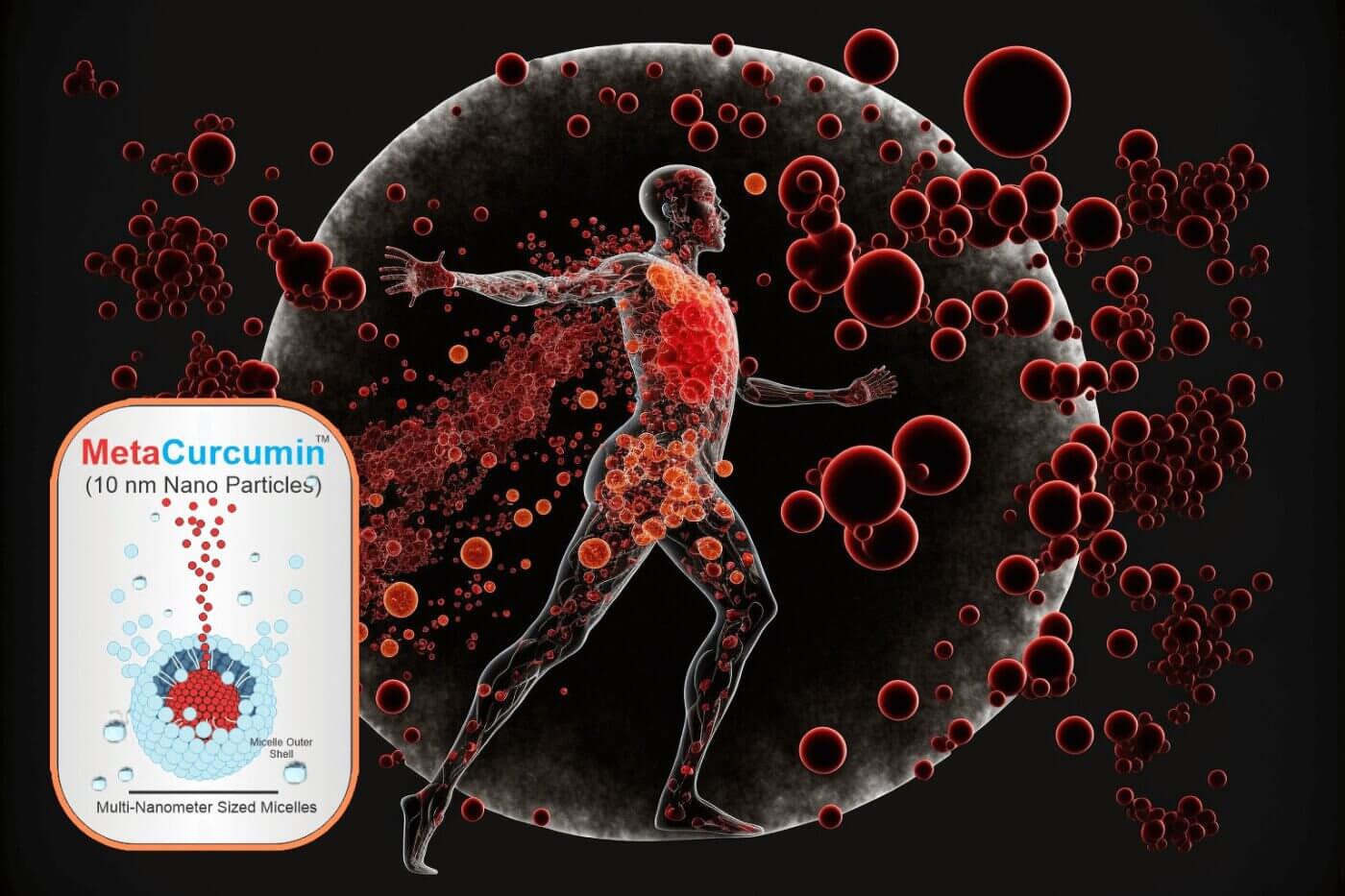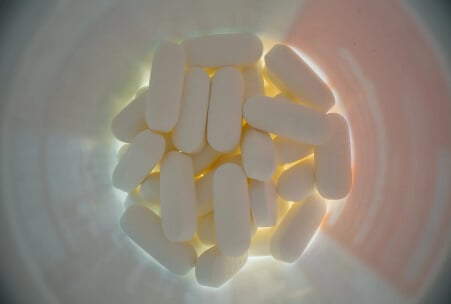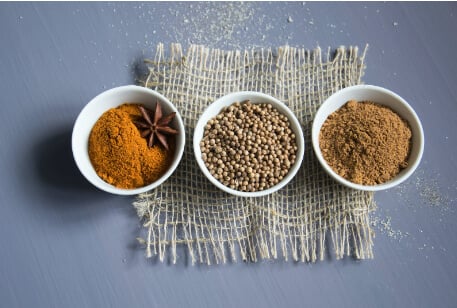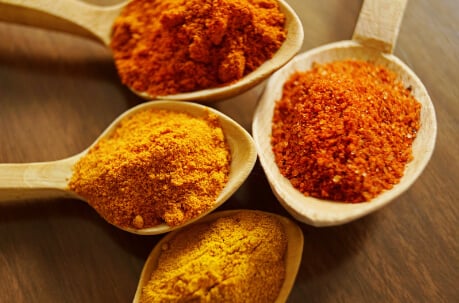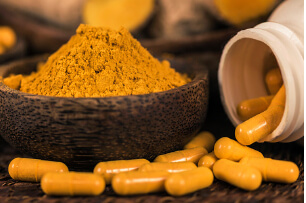The supplement industry is fascinating since some of the most potent components aren't necessarily brand-new but have been used for many years. Ayurvedic and Traditional Chinese Medicine both strongly emphasize natural herbs and roots, and many of these ingredients have made their way into the western supplement industry.
Curcumin, the renowned active component in turmeric root, is one such substance. Its potent antioxidant profile gives it a wide range of benefits, including reducing +Inflammageing and enhancing metabolic efficiency. What happens when this extra stalwart is encountered by modern science, despite some of its strengths in its basic form? One of these two universes enhances the potential of the other when they meet! [1][2]
Where does Tetrahydrocurcumin come from?
Tumeric’s background must first be discussed to give Tetrahydrocurcumin the proper context prior to discussing it in subsequent blogs.
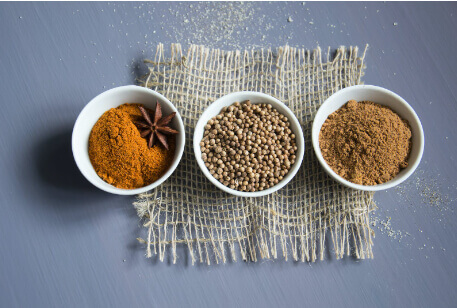
Talking about turmeric: some context
Turmeric has existed for years and is well-known as one of the world's most potent natural medicines. Turmeric is a plant from the Zingiberaceae family, also referred to as Curcuma longa in some regions of the world. The plant's rhizome, a horizontal underground stem that sprouts lateral shoots, is where turmeric is located and is where the medicinal and health-promoting applications come from.
Turmeric use and history
Turmeric is one of the many natural herbs and spices that are indigenous to the ginger family of plants and are found in large portions of Asia and Africa. Its relative abundance in these areas, notably Ayurvedic and Traditional Chinese Medicine, finally spurred its adoption among some of the oldest natural medical systems (TCM).

The Vedic culture in India used the compound as a culinary spice and a holy artifact, suggesting that turmeric had its first appearance in civilization more than 4000 years ago. Around 250 BC, it appeared in Ayurvedic literature, where it was recommended as a remedy for eating poisoned food. Folk medicine uses of the spice have since expanded as Ayurvedic practices started using it for various ailments, including +Inflammageing, energy, digestion, and respiratory health. The sauce is still used for culinary and medicinal purposes because people still find it flavorful and efficient in some health-related applications.
Much of the same is true of other Zingiberaceae-related plants, such as Zingiber officinale (ginger) and Aframomum (grains of paradise), which have similar histories and properties to turmeric. Additionally, spices and turmeric have distinctive bioactive components that underlie their highly prized abilities.
The primary component of turmeric is curcumin.
Even though turmeric contains hundreds of different elements, a few, in particular, are primarily responsible for what turmeric's health benefits. The majority of turmeric's alleged health advantages are believed to be carried by three of these substances known together as curcuminoids. [3]

Curcumin is the main active ingredient of turmeric, and is the principal constituent of the curcuminoid class of compounds. Demethoxycurcumin and bisdemethoxycurcumin, are the other two curcuminoids, and while they do make a contribution, they are found in lesser amounts than curcumin. Since curcumin dominates the action, these auxiliary curcuminoids are merely supporting characters in the giant game of nutraceuticals. [4]
The methods of action of curcumin
It's interesting to see how curcumin begins to function inside the body. Curcumin is a yellow substance, which gives turmeric its color, and can affect bodily functions directly, but it also serves as a "Kickstarter," for other biological interactions following its initial interaction. Curcumin has many direct molecular actions, including examples of the following:
- The nature of the effects of AP-1 transcription factors on cell proliferation varies on where they are expressed. Curcumin upregulates antioxidant enzyme activity in more favorable AP-1 expression while inhibiting the effects of AP-1 produced by Tumor promoters. [5]
- Curcumin induces apoptosis of Cancer cells. Some Cancer cells can survive in our body because they trigger the activity of protective enzymes such as bcl-2, that prevent a specific cell death, called apoptosis. Curcumin blocks in leukemic Cancer cells the activation of bcl-2 and makes these Cancer cells susceptible to apoptosis. [10]
- mTOR (mammalian target of rapamycin) expression suppression. Although mTOR activity is crucial for increasing strength and muscle growth, it is also connected to +Inflammageing because, like AP-1 expression, mTOR activity that originates from Tumor cells can be harmful. Curcumin works as an Anti-Inflammatory to lessen some of these risks. [6]
- Src and focal adhesion kinase (FAK), two protein kinases whose individual pathways have been connected to the emergence of numerous illnesses and malignancies, are being inhibited. [7]
Nuclear factor kB targeting
The NF-kB pathway is one of curcumin's primary targets, and its blockage is a crucial reason in why curcumin has such a substantial Anti-Inflammatory impact. Many downstream actions produced by curcumin have to do with NF-kB, a prominent proinflammatory in the body. [8]
Many of curcumin's biological activities are made possible by these interactions. Studies have shown this curcuminoid to be a potent Anti-Inflammatory, an agent for reducing Anxiety, a nitric oxide stimulant, and a metabolic regulator. Curcumin offers many potential advantages, but you might wonder what the catch is. [9]
Click here to know more about Curcumin and it's benefits.
References:
- https://www.sciencedirect.com/science/article/abs/pii/S0144861721014673
- https://onlinelibrary.wiley.com/doi/abs/10.1002/ptr.7360
- https://www.sciencedirect.com/science/article/abs/pii/S2095496422000309
- https://www.mdpi.com/1420-3049/27/16/5236
- https://www.tandfonline.com/doi/abs/10.1080/14728222.2022.2061349?cookieSet=1
- https://onlinelibrary.wiley.com/doi/abs/10.1111/odi.14271
- https://www.mdpi.com/1422-0067/23/21/13334
- https://www.mdpi.com/1420-3049/27/13/4058
- https://www.mdpi.com/1422-0067/23/4/1964
- https://www.sciencedirect.com/science/article/abs/pii/S0006291X06028166?via%3Dihub



